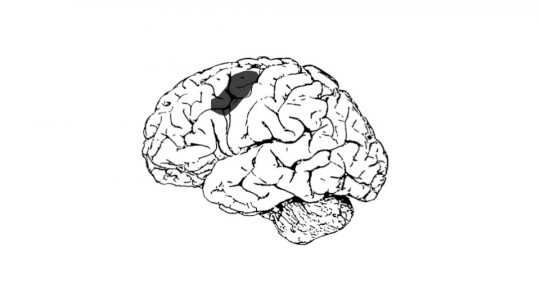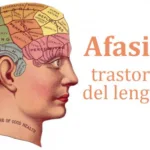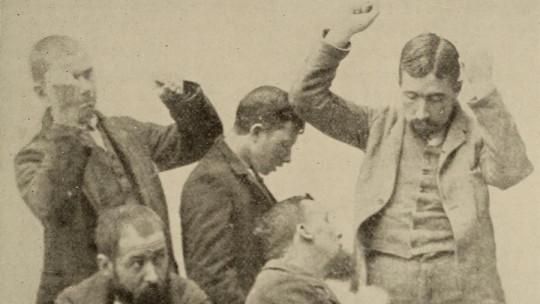
There are various alterations related to language. Verbal stereotypies often occur in pathologies such as Autism Spectrum Disorder, aphasia and dementia, among others. One of the most common verbal stereotypies is echolalia. Are you interested in knowing what it is about? Find out in this PsychologyFor article, in which we will delve into the echolalia: what it is, causes, types and treatment. Next, we talk about echolalia in children and adults to offer a global image of this language alteration.
What is echolalia
The echolalia It is an iterative language disorder in which there is a irrelevant and persistent repetition of the last words or phrases that have been heard by the subject, as an echo. Sometimes the repetitions are exact, even going so far as to imitate the intonation. Speech with echolalia is usually accompanied by monotonous, mechanical language with the same tone and rhythm of voice.
Causes of echolalia
To understand the causes of this iterative language disorder, we must understand that echolalia is often part of the evolutionary development of children. That is, many children learn to speak and internalize language by performing echolalia.
However, from the age of 3 it can be a consequence of another pathology that the subject presents or it may be a simple language delay.
Disorders that present echolalia
Echolalia is associated with different disorders, therefore, it can have multiple causes. Some of the most common disorders are listed below:
- Autism Spectrum Disorder: around 80% of children with this disorder have this alteration. There are different hypotheses about the origin of echolalia in ASD, one of the best known is the multifactorial hypothesis of Schuler and Prizant (1985). These authors consider that echolalia is due to the fact that these children have a deficit in verbal skills and profound limitations in social cognition.
- Tourette syndrome: It is a neurological disorder that manifests before the age of 18 and is characterized by multiple motor tics and one or more vocal tics for more than a year. In this disorder, the use of echolalia is common, as well as cropolalia (involuntary emission of obscene words) and palilalia (involuntary repetition of a word several times in a row and in a spasmodic manner).
- SchizophreniaSpecifically, it is a subtype of catatonic schizophrenia, which consists of immobility or excessive motor activity. Other symptoms similar to echolalia, such as echopraxia (repetition by the subject of the gestures they see at their interlocutor), are also common.
- Aphasias: Aphasias are acquired language disorders due to a brain injury, specifically in the temporal lobe. Echolalia frequently occurs in transcortical sensory aphasia, in which the subject has language comprehension deficits. In this type of aphasia there is also the presence of verbal paraphasias (unintentional production of syllables, words or phrases).
- Dementia: They are neurodegenerative disorders, characterized by the presence of multiple cognitive deficits. Language disorders are usually quite common. Echolalia is usually present in disorders such as: Parkinson’s, Pick’s Disease, among others.
Types of echolalia
There are different types of echolalia according to different criteria. Let’s see which ones there are:
Response latency
Depending on the latency of the response, that is, the time it takes for the repetition to appear, we find these two types of echolalia:
- Immediate echolalia: the subject repeats his interlocutor’s expression immediately after its production. It is the most common type.
- Delayed or delayed echolalia: As the name suggests, this is delayed repetition. In most cases, a subject with delayed echolalia may take hours, days or even months to repeat the last words he heard. For example, children with autism spectrum disorder often repeat things they have heard from their parents or on television.
Communicative intentionality
Depending on whether it exists or not communicative intentionality In behavior, we can differentiate between the following types of echolalia:
- Functional echolalia: the echo emitted has a communicative intention.
- Non-functional echolalia: Repetition lacks a communicative purpose and usually has a self-stimulation or self-regulation function. That is, repetitions can calm the subject. This type occurs especially in Autism Spectrum Disorder (ASD).
Finally, it must be added that sometimes the repetitions are exact, even going so far as to imitate the intonation, but when this is not the case, it is a matter of:
- Mitigated or expanded echolalia: when the subject introduces variations in the repetition and it is not given exactly.
Treatment for echolalia
Currently, no treatment has been found to eliminate echolalia, since, as mentioned above, the causes may be different. However, a series of guidelines can be worked on with the patient so that repetitions are reduced. Let’s look at some examples:
- Speak slowly with good articulation and using facial expressions to facilitate patient understanding.
- Instructions clear and precise.
- Give a margin of time to respond, so they can process the information they have been given.
- Use simple vocabulary to facilitate your understanding
This article is merely informative, at PsychologyFor we do not have the power to make a diagnosis or recommend a treatment. We invite you to go to a psychologist to treat your particular case.
This article is merely informative, at PsychologyFor we do not have the power to make a diagnosis or recommend a treatment. We invite you to go to a psychologist to treat your particular case.
If you want to read more articles similar to Echolalia: what it is, causes, types and treatment we recommend that you enter our Clinical Psychology category.
Bibliography
- Arrufat, F., Alterations of language and thought, In: (Editor: Obiols, JE) Manual of general psychopathology (2008) New Library, University Editions, Madrid.
- Benito-Arranz, S. (1983). The echolalia. Evaluation and meaning in autistic children. Journal of Psychiatry and Medical Psychology.
- Bravo Córdova, VA (2013). Echolalia as language disorders in children with Down syndrome aged 5 to 6 years(Bachelor’s thesis, University of Guayaquil Faculty of Philosophy, Letters and Educational Sciences).
- Collado-Vázquez, S., & Carrillo, JM (2013). Tics and Tourette syndrome in literature, film and television. Rev Neurol, 57(3), 123-133.
- Hernandez Jaramillo, BY (2010). Dementia: language problems as early findings. Colombian Association of Neurology.
- Murillo, G., Goñi Murillo, AC, & Goñi Murillo, MP (2006). Dementia due to Pick’s disease. SEMERGEN, Soc. Esp. Med. Rural Gen. (Print ed.)172-175.
- Roberts, J. (2014). Echolalia and language development in children with autism. In Arciuli, J., and Brock, J. Communication in Autism. Amsterdam: Benjamins.








